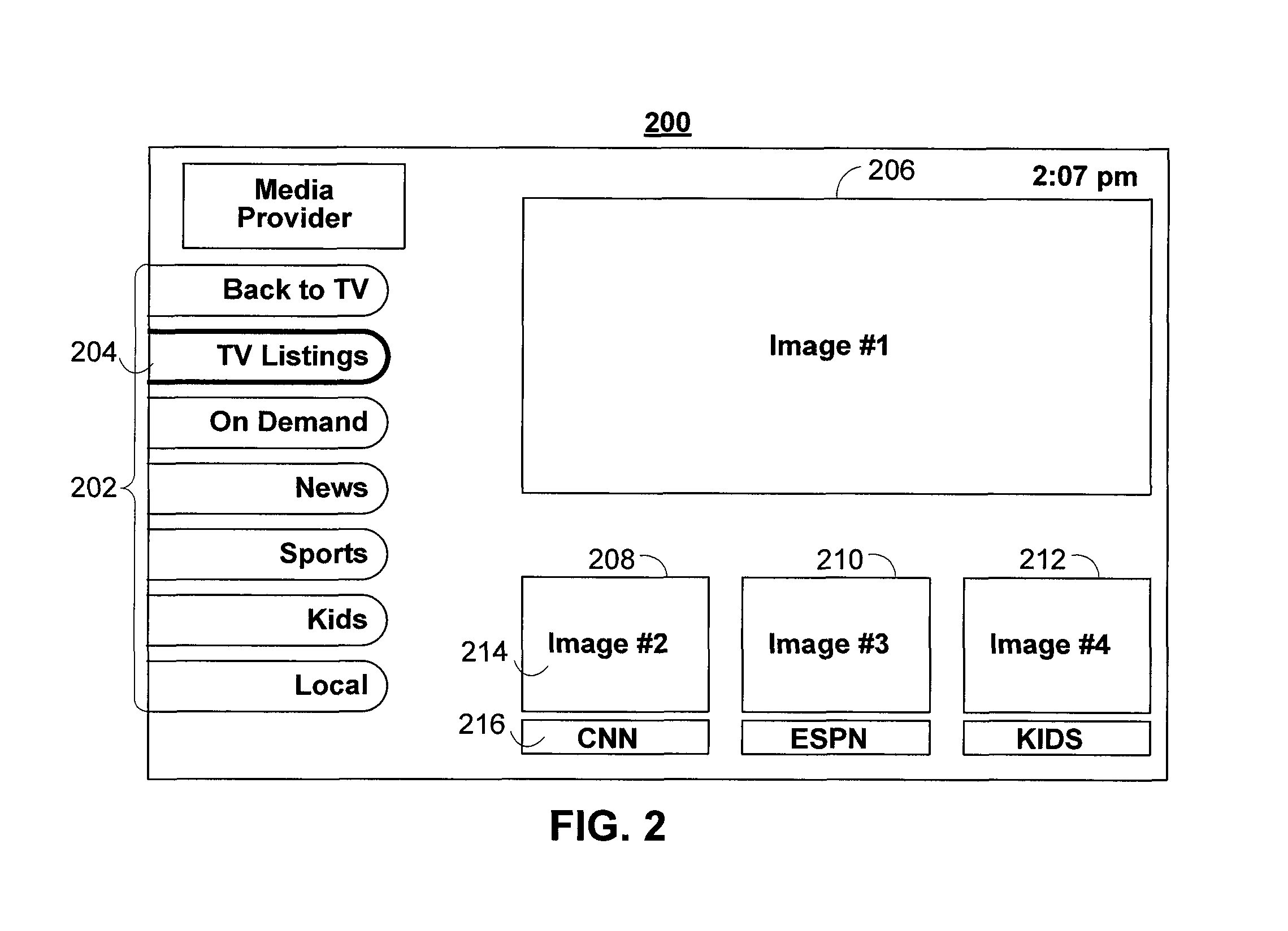Systems and methods for initializing allocations of transport streams based on historical data
a technology of transport streams and allocation methods, applied in the field of system and method for initializing allocations of transport streams based on historical data, can solve the problems of limiting the number of media assets a family member, or user, can simultaneously receive, and traditional systems are unable to accommodate many user requests, so as to reduce the amount of re-allocations and quickly identify.
- Summary
- Abstract
- Description
- Claims
- Application Information
AI Technical Summary
Benefits of technology
Problems solved by technology
Method used
Image
Examples
Embodiment Construction
[0028]It is well known in the art that transport streams are based on the legacy frequency bandwidths allocated for radio transmissions, as set by the FCC. Each transport stream can be identified by its center carrier frequency, such as 56 MHz. The range of bandwidth associated with each transport stream is approximately 6 MHz as this was the standard for transmitting an analog channel. The same transport stream for transporting an analog channel can now be used to multiplex about ten media assets, or ten digital channels (e.g., assuming 256 bit Quadrature Amplitude Modulation), by compressing data using MPEG-2 or MPEG-4. This makes it possible for a user equipment system with only one stream selector to receive ten media assets simultaneously transporting on the same transport stream. FCC have allocated carrier frequencies from 56 MHz to about 1000 MHz to be used by content providers for broadcasting / delivering content to end users. Therefore, the content providers have approximate...
PUM
 Login to View More
Login to View More Abstract
Description
Claims
Application Information
 Login to View More
Login to View More - R&D
- Intellectual Property
- Life Sciences
- Materials
- Tech Scout
- Unparalleled Data Quality
- Higher Quality Content
- 60% Fewer Hallucinations
Browse by: Latest US Patents, China's latest patents, Technical Efficacy Thesaurus, Application Domain, Technology Topic, Popular Technical Reports.
© 2025 PatSnap. All rights reserved.Legal|Privacy policy|Modern Slavery Act Transparency Statement|Sitemap|About US| Contact US: help@patsnap.com



